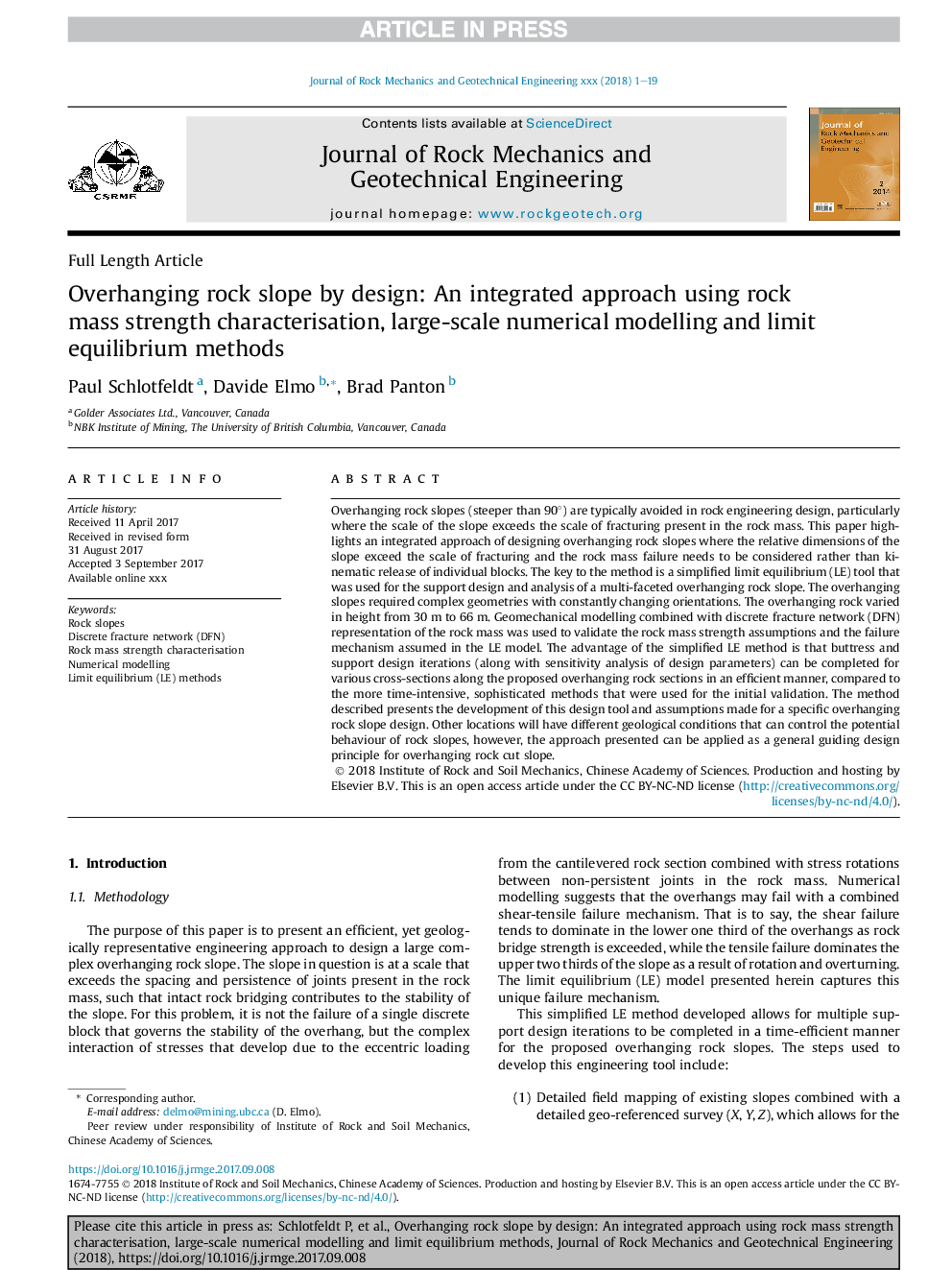| Article ID | Journal | Published Year | Pages | File Type |
|---|---|---|---|---|
| 6752376 | Journal of Rock Mechanics and Geotechnical Engineering | 2018 | 19 Pages |
Abstract
Overhanging rock slopes (steeper than 90°) are typically avoided in rock engineering design, particularly where the scale of the slope exceeds the scale of fracturing present in the rock mass. This paper highlights an integrated approach of designing overhanging rock slopes where the relative dimensions of the slope exceed the scale of fracturing and the rock mass failure needs to be considered rather than kinematic release of individual blocks. The key to the method is a simplified limit equilibrium (LE) tool that was used for the support design and analysis of a multi-faceted overhanging rock slope. The overhanging slopes required complex geometries with constantly changing orientations. The overhanging rock varied in height from 30 m to 66 m. Geomechanical modelling combined with discrete fracture network (DFN) representation of the rock mass was used to validate the rock mass strength assumptions and the failure mechanism assumed in the LE model. The advantage of the simplified LE method is that buttress and support design iterations (along with sensitivity analysis of design parameters) can be completed for various cross-sections along the proposed overhanging rock sections in an efficient manner, compared to the more time-intensive, sophisticated methods that were used for the initial validation. The method described presents the development of this design tool and assumptions made for a specific overhanging rock slope design. Other locations will have different geological conditions that can control the potential behaviour of rock slopes, however, the approach presented can be applied as a general guiding design principle for overhanging rock cut slope.
Related Topics
Physical Sciences and Engineering
Earth and Planetary Sciences
Geotechnical Engineering and Engineering Geology
Authors
Paul Schlotfeldt, Davide Elmo, Brad Panton,
